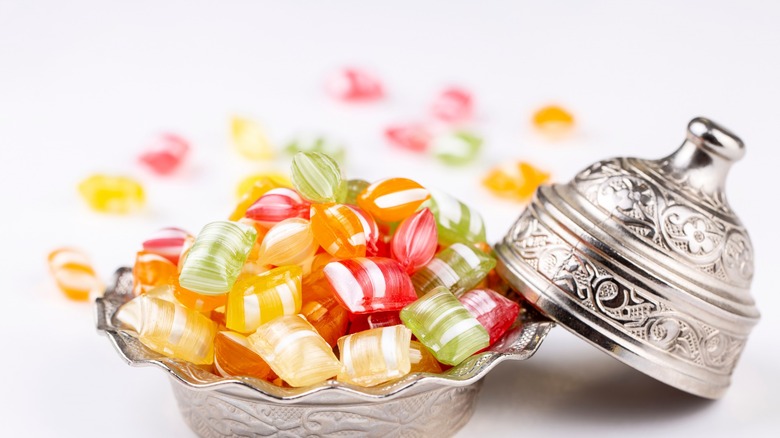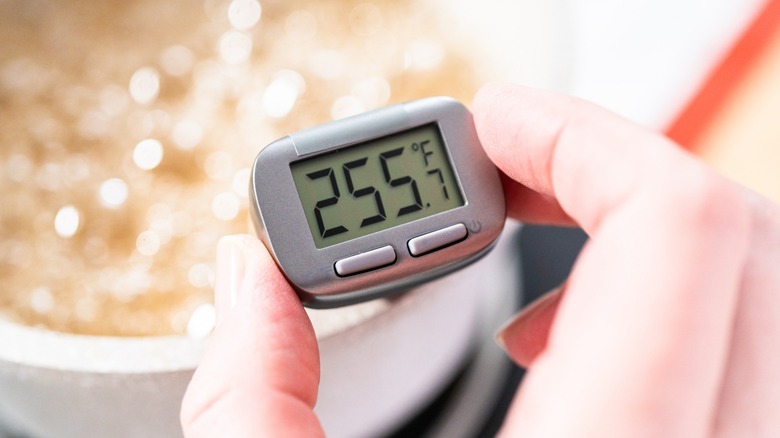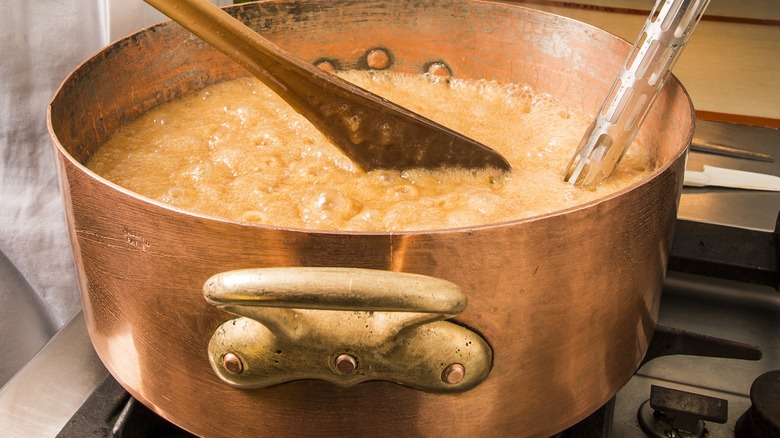How Important Is A Candy Thermometer When Making Your Own Sweets?
It's probably safe to say everybody loves candy. After all, people have been making and consuming tasty sweet treats for a long, long time. Regardless, the cooking process can be challenging, and in some cases (depending on the type of candy and its shape), you may need some specific instruments to get the job done. This most often includes a candy thermometer — but is the device all that necessary? The short answer is yes, very much so.
Candy thermometers are essential when making candy because of the sugary snack's nature. Sweets are simply a mixture of water and sugar boiled down to a specific temperature, which specifies what kind of confection you will create. The variances in the final temp can transform the mass into fudge, caramel, syrup, nougat, taffy, or brittle so that temperature makes a huge difference. That's not to say that other added ingredients aren't as significant, but they're mostly there for appearance and flavoring. As a result, you should definitely be using a candy thermometer when making confections at home.
Why a candy thermometer is important
Candy types are categorized into different subsets based on the temperature they reach before removing them from direct heat. The specific ranges of this measurement are further broken down into six distinct phases (known as sugar stages) as the mixture cooks. These stages include the thread stage, soft-ball, firm-ball, hard-ball, soft-crack, and hard-crack — where your candy falls in this line-up of stages determines what type of candy you will have. Although it's possible to determine which stage your sugar blend is in with an old kitchen trick known as the cold-water test (used in this jamoncillo de leche recipe), a thermometer will be much more precise.
Consequently, accuracy is vital because the correct temperature for each sugar stage may differ depending on who you ask. Regardless, because candy styles hinge on reaching these specific numbers, a thermometer is the best way to go (and this guide on candy thermometers is a great place to start). Still, there are some other noteworthy aspects to consider when making candy.
How to avoid mistakes when working with sugar
Melting sugar is risky — the mixture is basically napalm. As Insider explains, "Sugar melts at a temperature that is higher than what's needed to boil water, so the...mix is both hotter and stickier." Even worse, the water content evaporates and causes scalding steam, so take caution not to stand right over the pot.
Extra caution should also go into your utensils, equipment, and techniques. Some experts suggest using a sturdy pot with some length and heft, oven mitts for protection, a silicone pad, a pastry brush, and a wooden spoon when making candy. The heavy, long pot will reduce splashback and evenly distribute heat. A wooden spoon is less likely to heat up, and a mat can be necessary since cooled sugar is tricky to remove from surfaces. Nevertheless, your methods may be more critical than your gadgets.
According to Bon Appétit, "Crystallization is the enemy of candies, fudge, and confections," so instead of stirring the pot after the sugar is incorporated, simply swirl the pot to mix ingredients. After all, overmixing, along with using improperly cleaned tools, are some of the ways crystals form, and once they develop, they spread. It's best to avoid this as no one likes grainy candy. That, plus utilizing your trust thermometer will ensure delicious candies every time.


